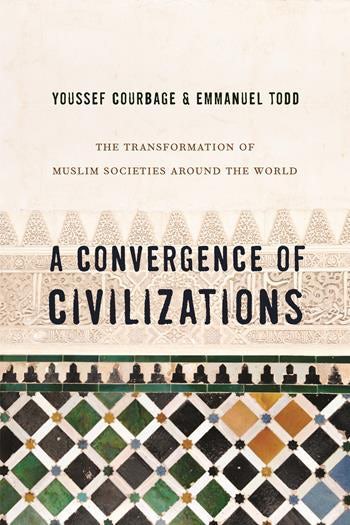We are told that Western/Christian and Muslim/Arab civilizations are heading towards inevitable conflict. The demographics of the West remain sluggish, while the population of the Muslim world explodes, widening the cultural gap and all but guaranteeing the outbreak of war. Leaving aside the media's sound and fury on this issue, measured analysis shows another reality taking shape: rapprochement between these two civilizations, benefiting from a universal movement with roots in the Enlightenment.
The historical and geographical sweep of this book discredits the notion of a specific Islamic demography. The range of fertility among Muslim women, for example, is as varied as religious behavior among Muslims in general. Whether agnostics, fundamentalist Salafis, or al-Qaeda activists, Muslims are a diverse group that prove the variety and individuality of Islam. Youssef Courbage and Emmanuel Todd consider different degrees of literacy, patriarchy, and defensive reactions among minority Muslim populations, underscoring the spread of massive secularization throughout the Arab and Muslim world.
In this regard, they argue, there is very little to distinguish the evolution of Islam from the history of Christianity, especially with Muslims now entering a global modernity. Sensitive to demographic variables and their reflection of personal and social truths, Courbage and Todd upend a dangerous meme: that we live in a fractured world close to crisis, struggling with an epidemic of closed cultures and minds made different by religion.
- Contents
- List of Figures and Tables
- Introduction: Clash of Civilizations or Universal History?
- 1. The Muslim Countries in the Movement of History
- The Growth of Literacy and the Decline in Fertility
- A “Disenchantment” 5 of the Muslim World
- 2. Crises of Transition
- Literacy, Contraception, Revolution
- Muslim Crises of Transition
- Islamism and Forecasting the Future
- The Question of Ideological Content
- 3. The Arab Family and the Transition Crisis
- Patrilinealism and Patrilocalism
- The Shiite Law of Inheritance
- Endogamy
- Psychological and Ideological Implications of Endogamy
- The Shock of Modernization
- 4. Other Muslim Women: East Asia and Sub-Saharan Africa
- Malaysian and Indonesian Matrilocalism
- The Mass Polygamy of Sub-Saharan Africa
- Unprecedented Transition Crises?
- 5. At the Heart of Islam: The Arab World
- A Belated and Unexpected Transition: Literacy and Oil Wealth
- France and the Acceleration of the Transition in the Maghreb
- Backwardness and Division in Syria: Sunnis and Alawites
- The Heterogeneity of the Arabian Peninsula
- A European Lebanon?
- The Palestinians: Occupation, War, and Fertility
- 6. The Non-Arab Greater Middle East
- Iran Ahead of Turkey
- The Uncertain Role of the State
- Demographic Transition and Nation-state
- Religion, Demography, Democracy
- The Pakistani Demographic Time Bomb
- Demographic Normality and Political Threat
- Afghan Parenthesis
- Bangladesh: Overpopulation and Decline of the fertility rate
- 7. After Communism
- Accelerated Increase in Literacy
- Un-Islamic Birth Control: Through Abortion . . .
- . . . And Through Infant Mortality
- Muslim Divergences in the Balkans
- 8. Matrilocal Asia
- A Normal Transition That Has Stopped
- In Malaysia, Nationalism Rather Than Islam
- 9. Sub-Saharan Africa
- Regional Differences in Fertility:Ethnic Groups and Religions
- Muslim Girls Spared by Mortality
- Conclusion
- Appendix: Total Fertility Rates of Muslim Countries
- Notes

